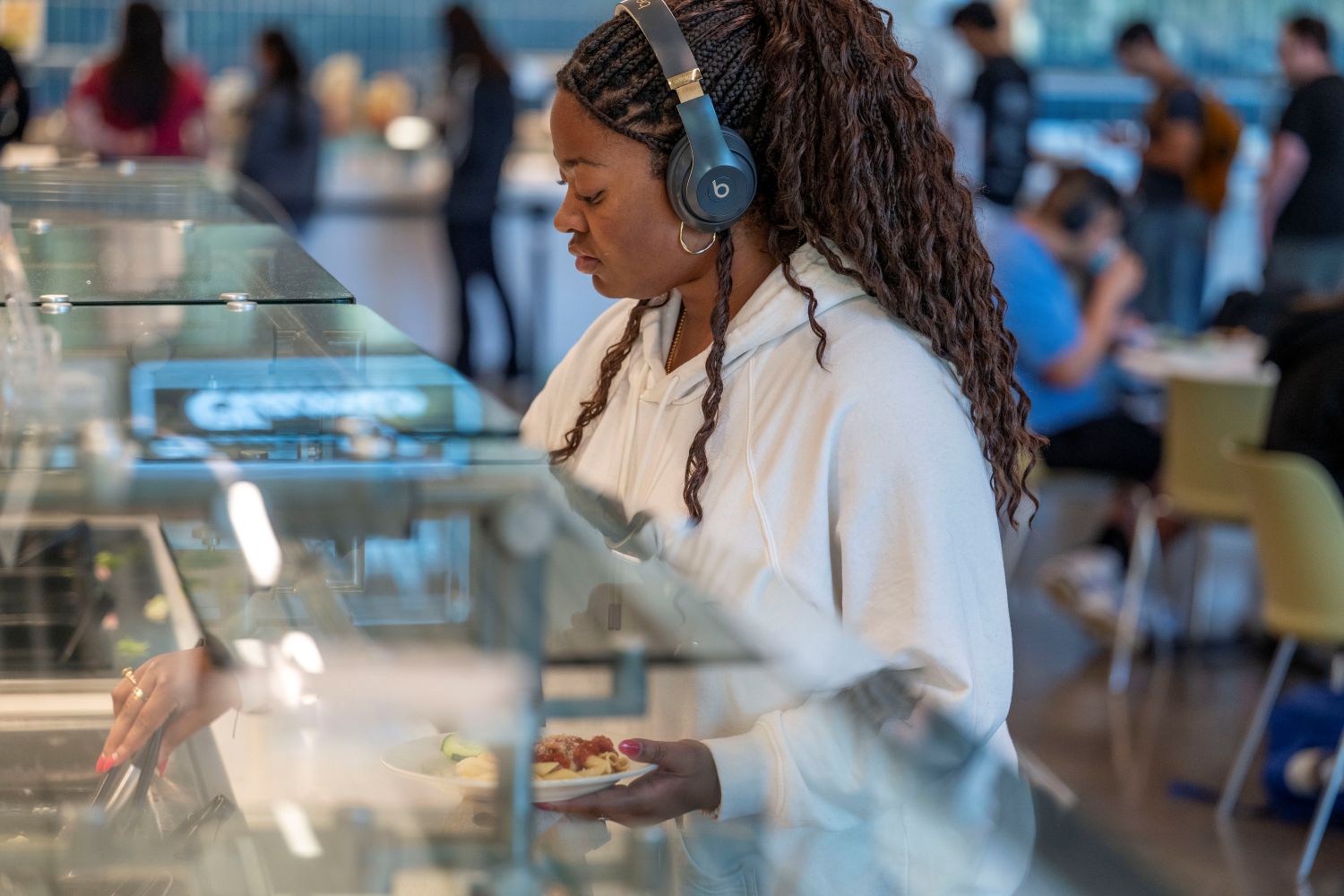Nutritional Quality of College Dining Options Vary by Location, Time of Day
Putting on the “freshman 15” is a well-worn joke around college campuses – and there’s scientific data to back up this phenomenon.
Researchers have established that new college students often fall short of meeting dietary recommendations.
“When students first get to college, they tend to eat unhealthier because they’re on their own for the first time,” says Catherine Andersen, associate professor of nutritional sciences. “They have more autonomy in their food choices, and often they’re choosing less healthful foods and beverages.”
Establishing poor eating habits early in adulthood has been linked to long-term consequences like obesity and chronic diseases.
Given this, researchers have looked at how the food environment at universities plays a role. But many of these studies focus exclusively on a single aspect of the food environment, such as dining halls or vending machines, which are usually only one food option of many on campus.
Andersen, who is faculty in the College of Agriculture, Health and Natural Resources (CAHNR), published a study in the Journal of Agriculture and Food Research, taking a wider perspective of nutrition on a college campus.
Andersen looked at dining options including the buffet-style campus dining hall, a grab-and-go style eatery, the campus food court, vending machines, and a commercial coffee shop at a small liberal arts university in the northeast.
Andersen and her collaborators looked at the nutritional content in a serving of food at each location. They compared standard nutritional measures like calories, fat, sugar, protein, fiber, sodium, and carbohydrates and averaged them across all available options.
The dining hall options provided the lowest calories, carbohydrates, sugar, and saturated fat, but the highest amount of fiber on average.
Surprisingly, the researchers found that the options in the vending machine actually had the lowest average sodium across all locations, and less sugar than the coffee shop.
The study also compared the nutritional quality of options at different times of day. This consideration was inspired by conversations Andersen had with her students who often have labs that don’t end until after the dining hall closes. Students also mentioned that with packed class schedules, they don’t always have time to go somewhere with healthier options.
“From subjective feedback, it seemed like based on where your dorm was, your major, or what your class schedule was like, dining options seemed to be pretty variable,” Andersen says. “So that’s why we took this approach.”
They found that foods served in the dining hall for breakfast tended to be higher in sugar and lower in protein and sodium than those served for lunch and dinner.
“Overall, this might mean that depending on when you go to the dining hall – just for breakfast or dinner, or every meal – there might be differences in the amount of sugar or sodium you have to choose from,” Andersen says.
This work is a pilot project that could be expanded to look at other types of universities, for example, large public schools like UConn, as well as institutions elsewhere in the U.S.
“Sometimes it can be easier said than done to just eat healthy, because people have busy lives, they have breaks for meals for only so long,” Andersen says. “So, it’s important to reflect on your food environment and how that influences what you ultimately end up eating.”
This work was supported by a grant from the National Consortium for Building Healthy Academic Communities.
This work relates to CAHNR’s Strategic Vision area focused on Enhancing Health and Well-Being Locally, Nationally, and Globally.
Follow UConn CAHNR on social media
Latest UConn Today
- Synergy Retreat Brings Together UConn, ADA ResearchersStrategic effort to build collaborations that advance oral and general health
- OVPR Presents 2025 Year in ReviewPublication captures UConn's successful year of research and innovation.
- UConn Establishes Office for Inclusion and Civil RightsMerger combines the programs of Offices for Institutional Equity (OIE) and Diversity and Inclusion (ODI), aligning efforts and reflecting UConn’s values
- Our ImpactUConn School of Medicine's 2025 Annual Report.
- UConn Puppet Arts Alums Shine Bright as Diamonds in 60th Anniversary Exhibition'Puppets can make us laugh and cause us to cry. They can inspire us to action and give us ideas to contemplate. Reality and fantasy are equally expressed through the puppet arts'
- Better Hydration May Lead to Better SleepSleep quantity and quality were both evaluated as part of the study













